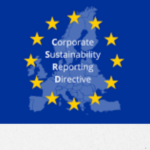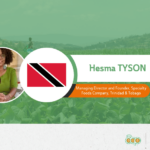New EU Plant Health Regulation: anticipating impacts for African, Caribbean and Pacific countries!
- 10/10/2017
- Posted by: Gaetan Dermien
- Category: Uncategorized
On 13 December 2016, the new EU Plant Health Regulation (Regulation (EU) 2016/2031) was introduced*. This is a major overhaul of the EU Plant Health legislation, which has been in place since 1977. It repeals and replaces the 7 existing Council Directives on harmful organisms, and becomes fully applicable on 13 December 2019. In the interim, a series of delegated and implementing acts will be adopted, and competent authorities and operators must adjust to the new rules.
One of the main changes under the new regulation is that it addresses all pests – quarantine and non-quarantine – which will be categorised following risk assessment. This will include priority pests, which are Union Quarantine Pests with the most serious potential impact on the EU. They will be subject to enhanced measures including surveys, eradication action plans, and contingency plans. A list of priority pests will be adopted through a delegated act by the time the new regulation is fully applied in 2019.
The regulation also introduces specific measures concerning imports, and the movement within the EU, of certain high risk commodities; this is a new level of precaution. Annexes III and IV of Directive 2000/29** under current rules will remain valid, and an additional list of high risk plants or plant products will be adopted.
Finally, there will also be important changes concerning requirements for phytosanitary certificates, registration of professional operators, traceability of commodities, plant passports (planting material), and export, re-export and pre-export certificates.
While the import of most plants and plant products from non-EU countries will in principle be allowed, under the new regulations they will be subject to more stringent conditions, and there could be some serious implications for trade. The main concerns include the introduction of the regulations itself, the requirement for phytosanitary certificates, and the listing of high risk commodities.
During the lead up to the full application of the new EU Plant Health Regulation on 13 December 2019, COLEACP (via FFM) will work hand in hand with ACP representatives at the SPS Committee, competent authorities in ACP countries and industry representatives to avoid any loss or breaks in trade which would have a negative development impact.
Contact COLEACP for more details at info@coleacp.org
Previous news on this topic: “Stringent new European Union plant health regulations introduced”
*http://eur-lex.europa.eu/legal-content/EN/TXT/?uri=CELEX:32016R2031 ; http://europa.eu/rapid/press-release_MEMO-16-4310_en.htm
**Annex III: Listing of harmful organisms whose introduction and spread within member states (or protected zones) is banned if they are present on certain plants or plant products; Annex IV: plants, plant products and other objects the introduction of which is prohibited in all member states ( or protected zones).





![EU and GB approval changes (January-March 2025) 9-FFM+-[ENG]](https://news.colead.link/wp-content/uploads/2024/06/9-FFM-ENG-150x150.jpg)